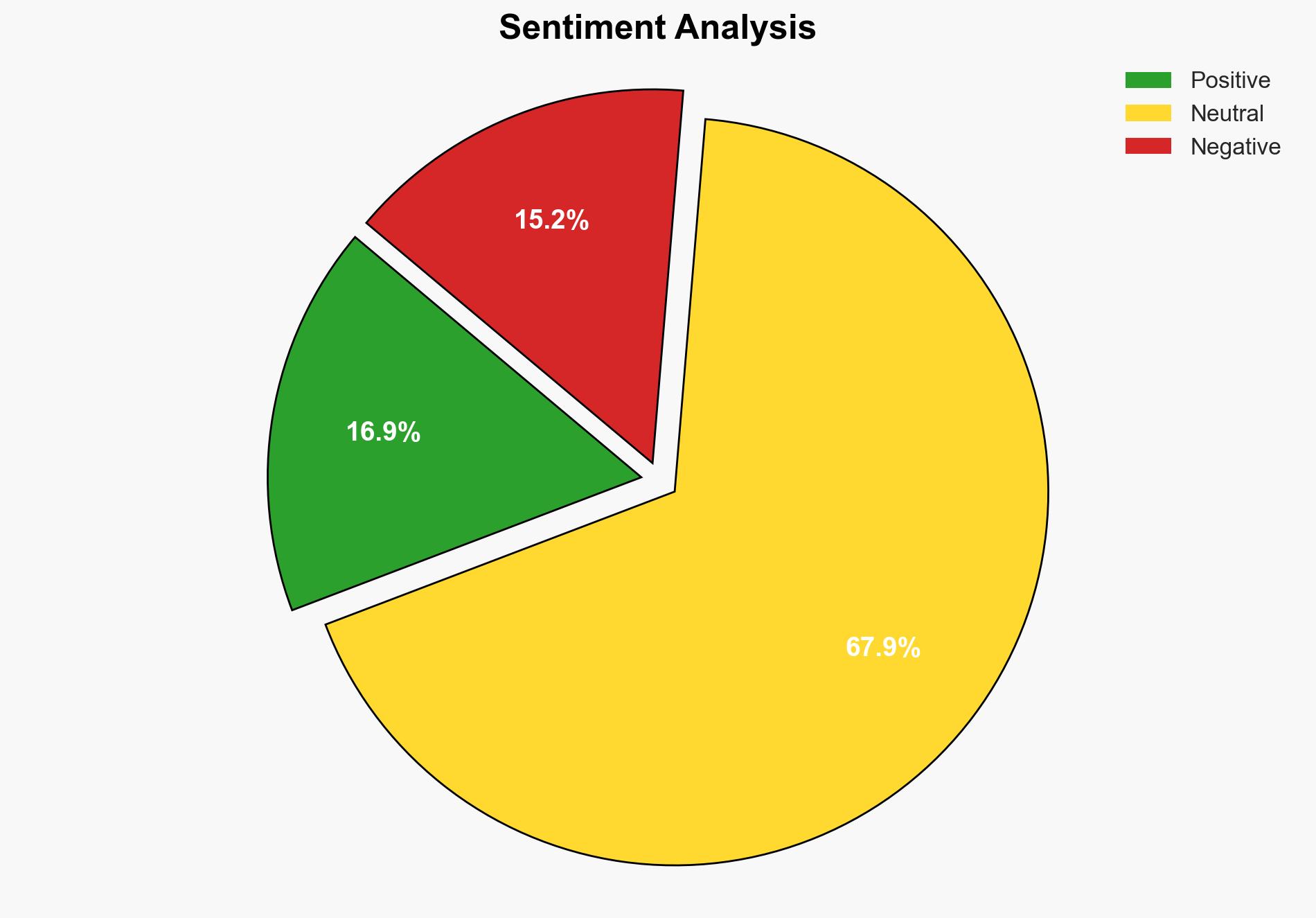Medical devices vulnerable to exploits and insecure connections – BetaNews
Published on: 2025-03-26
Intelligence Report: Medical devices vulnerable to exploits and insecure connections – BetaNews
1. BLUF (Bottom Line Up Front)
A recent report by Claroty highlights significant vulnerabilities in medical devices within healthcare organizations, with 53% of these devices susceptible to ransomware attacks due to insecure internet connectivity. The report identifies Russian cybercrime groups, including Black Basta and BlackCat, as key actors exploiting these vulnerabilities. Immediate action is required to enhance cybersecurity measures, prioritize critical vulnerabilities, and align with industry guidelines to protect patient safety and ensure operational continuity.
2. Detailed Analysis
The following structured analytic techniques have been applied for this analysis:
General Analysis
The report reveals that a significant portion of healthcare organizations’ medical devices, particularly those running outdated Windows and Linux operating systems, are vulnerable to ransomware attacks. These vulnerabilities are exacerbated by insecure internet connections and the use of legacy systems. The analysis indicates that 40% of hospitals have operational technology devices linked to known exploitable vulnerabilities (KEVs), which include building management systems, power supplies, and temperature controls. Furthermore, 51% of imaging systems, such as X-rays, MRIs, and CT scans, are at risk, potentially crippling patient care systems.
3. Implications and Strategic Risks
The vulnerabilities present significant risks to national security and public health, as compromised medical devices can disrupt patient care and hospital operations. The involvement of Russian cybercrime groups poses a threat to regional stability and economic interests, as these actors employ double and triple extortion tactics, increasing the financial burden on healthcare institutions. The pressure to digitally transform healthcare systems without adequate security measures further exacerbates these risks.
4. Recommendations and Outlook
Recommendations:
- Implement robust cybersecurity frameworks that prioritize the protection of critical medical devices and patient data.
- Conduct regular vulnerability assessments and patch management to address known exploitable vulnerabilities.
- Enhance collaboration between healthcare organizations and cybersecurity experts to develop industry-specific guidelines.
- Invest in modernizing outdated systems and improving secure connectivity to mitigate risks.
Outlook:
In the best-case scenario, healthcare organizations will successfully implement enhanced security measures, reducing the risk of ransomware attacks and ensuring patient safety. In the worst-case scenario, continued exploitation of vulnerabilities could lead to widespread disruptions in healthcare services, significant financial losses, and compromised patient data. The most likely outcome involves incremental improvements in cybersecurity practices, with ongoing challenges in addressing legacy system vulnerabilities.
5. Key Individuals and Entities
The report mentions Ty Greenhalgh as a significant individual involved in the analysis. Key entities include the cybercrime groups Black Basta and BlackCat, as well as the organization Claroty, which conducted the survey and analysis.





